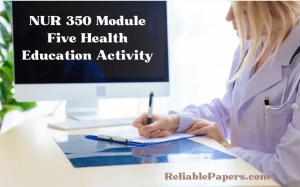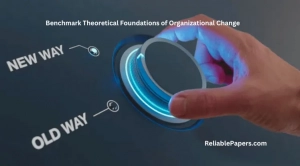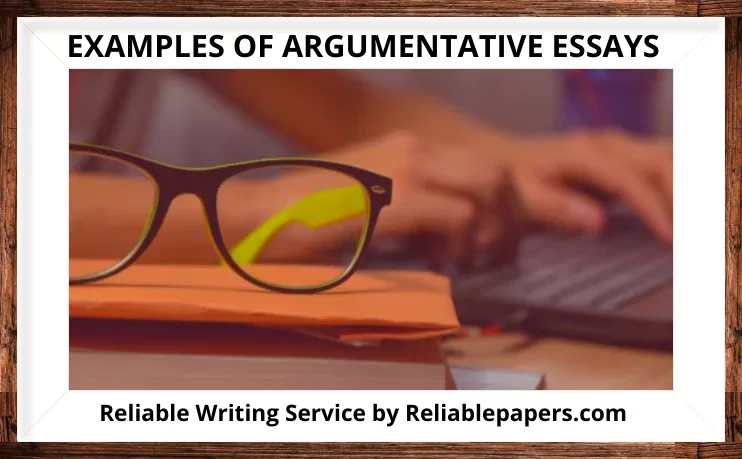How to Write a Discussion Board Reply Examples and Ideas
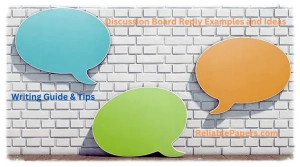
Writing a discussion board reply is an important aspect of online learning and communication. It provides a platform for students to express their ideas and perspectives on a given topic.
To write an effective discussion board reply, it’s important to understand the prompt and instructions, brainstorm your ideas, organize your thoughts into subheadings, write your reply, and edit and proofread it.
When responding to a discussion post, readily express your thoughts based on research. High-quality discussion board reply writing either answers or asks the right questions. It can be really fun to write discussion posts and expand on topics through well-thought-of questions on a forum.
An ideal discussion board reply thread should incorporate three parts: state what your thought or recommendation might be, provide evidence or support for your thought or recommendation, and ask questions that promote peer interaction.
In this guide, we’ll explore some examples and ideas for writing a discussion board reply, including subheadings you might use to structure your response. By following these guidelines, you can ensure that your discussion board reply is clear, concise, and relevant to the topic at hand.
What Is the Purpose of Discussion Board Reply?
The purpose of a discussion board reply is to engage in meaningful conversations with classmates or peers in an online learning environment. It allows students to share their thoughts, ideas, and perspectives on a particular topic or subject.
Discussion board replies can encourage critical thinking, collaboration, and communication skills as students respond to each other’s posts, ask questions and provide feedback. By engaging in discussion board replies, students can also deepen their understanding of the material and gain new insights from the perspectives of others.
Overall, the purpose of a discussion board reply is to create an active and collaborative learning community where students can learn from each other and expand their knowledge and understanding of a subject.
You can find more paper writing tips and examples, such as understanding how to get better at writing papers, in another article.
Guide on How to Write a Successful Discussion Post Reply
Read the Prompt and Instructions Carefully
Before you start writing, it’s important to read the prompt and instructions carefully to make sure you understand what’s being asked of you. Take note of the discussion topic, the questions asked, and any specific instructions or guidelines provided.
Brainstorm Your Ideas
Once you understand the prompt and instructions, take some time to brainstorm your ideas. Think about what you want to say and what points you want to make. Jot down your ideas on a piece of paper or type them out in a document.
Organize Your Thoughts into Subheadings
Organizing your thoughts into subheadings can help you structure your reply and ensure that you cover all the key points. Think about the different ideas and suggestions you want to make and group them under relevant subheadings.
Write Your Discussion Board Reply
Using your subheadings as a guide, start writing your discussion board reply. Begin with an introduction that sets the context and provides a brief overview of your key points. Then, use your subheadings to organize your ideas and suggestions.
Edit and Proofread Your Discussion Board Reply
Once you’ve finished writing your discussion board reply, take some time to edit and proofread it. Check for spelling and grammar errors, and make sure your ideas are presented clearly and concisely.
Valuable Tips on How to Respond to Discussion Posts
To respond to discussion posts, you should look for interesting ideas and provide additional information to support your peer’s post if you agree with it. If you disagree, explain why using evidence. It is important to understand the prompt and refer to the scoring rubric when crafting your response. You should also present evidence and examples, draft the answer before posting, and express yourself clearly. Good responses ask open-ended questions that push the conversation forward rather than ending it.
Below are some valuable tips to always consider when responding to discussion posts:
Read the Directions Carefully: Begin by carefully reading the instructions provided by your instructors. They usually outline their expectations for forum and discussion board posts in the syllabus. Pay attention to any specific rules, word count requirements, or other instructions they may have. Remember, each instructor and course may have unique expectations, so ensure you understand what’s expected in your discussion post.
Don’t Hesitate to Ask Questions: If you’re unsure about any aspect of the discussion board assignments, don’t hesitate to reach out to your instructor. You can send them an email to ask for clarification or more details. It might seem intimidating, but reaching out for guidance is the best approach when you’re uncertain about how to respond to a topic question or an instructor-led discussion. Your instructor is there to support your learning journey. Also, ask thoughtful questions to prompt an author of a specific post to clarify their position, provide more information, or engage in a deeper analysis of the topic. This can help to create a more in-depth and meaningful discussion.
Express Meaningful Thoughts: To make the most of your online discussion board posts, aim to engage in a genuine conversation. When you’re posting, think critically about your perspective and why you hold that viewpoint. Utilizing credible sources such as textbooks or journal articles can enhance your credibility and improve the quality of your posts.
Be Open-Minded: Be open to different perspectives and ideas presented in the discussion post replies. This can help you to gain a more well-rounded understanding of the topic and contribute to a more productive discussion.
Stay Professional: Remember that the discussion board is a professional learning environment. Avoid using slang, texting language, or another informal language. Instead, use proper grammar, punctuation, and spelling.
Be Thoughtful: Take the time to carefully read and think about the post before responding. Consider the author’s perspective and the issues they are addressing.
Stay on Topic: Keep your discussion post reply focused on the topic at hand. Avoid deviating from the main topic or adding unrelated information. This can help to keep the discussion productive and meaningful.
Provide Constructive Feedback: When responding to a post, provide constructive feedback that builds on the author’s ideas and encourages further discussion. Avoid making negative or dismissive comments.
Use Evidence: Use evidence from the course materials, outside sources, or personal experience to support your responses and add value to the discussion. This can help to strengthen your arguments and provide a more well-rounded perspective.
Engage with Peers: Respond to your classmates’ posts to encourage a collaborative learning community. This can also help you gain new insights and perspectives on the topic.
Be Respectful: Be respectful and courteous in your responses, even if you disagree with the author’s point of view. Avoid making personal attacks or derogatory comments.
Avoid Procrastination: Ensure you post your discussion thread well ahead of the deadline. Posting at the last minute is unlikely to garner thoughtful and insightful responses from others, and it doesn’t maximize your online learning experience.
Review and Proofread Your Post: Before hitting the “submit” or “create thread” button, take a moment to review your post. Make sure your content stays on-topic, and check for any spelling or grammar mistakes.
More on Engaging in Meaningful Conversations for Discussion Board Replies
Discussion boards serve as platforms for meaningful conversations, where each post contributes to the ongoing dialogue. When you respond to a post, you have the opportunity to enrich the conversation by referencing materials from your textbook, class lectures, or sharing your own life experiences when relevant. It’s important to go beyond mere agreement or disagreement; instead, focus on advancing the discussion constructively. Think of it as constructing a building, with each post laying a foundation for the next.
Constructive responses typically fall into three categories:
- Respectfully Disagreeing – “No, because…”: If you find yourself in disagreement with a fellow classmate’s post, it’s crucial to acknowledge and respect their viewpoint, even if it differs from your own. Avoid personal attacks and emotional appeals. Instead, concentrate on examining the logic behind their perspective. Does it hold up logically? Do the causes and effects they describe truly correlate? Do their claims logically follow one another? If you identify flaws in their argument, pose questions to gain a better understanding of their reasoning.
- Agreeing With and Expanding Upon a Post – “Yes, and…”: When you agree with the main idea expressed in a post and wish to contribute further, consider exploring additional facets of the topic. Think about aspects that your classmate may not have covered. Do you possess insights that can provide a more comprehensive view or contribute to the ongoing discussion?
- Agreeing With and Expanding Upon a Post – “Yes, but…”: This approach is similar to “Yes, and…” but with a twist. Here, you play the role of a “devil’s advocate,” pointing out aspects that don’t align perfectly with your classmate’s viewpoint or statement. While you agree with their general perspective, you highlight potential challenges or issues that make it harder to defend their position.
If you find yourself receiving lower grades on discussion board assignments and are uncertain about the reasons, don’t hesitate to seek feedback from your instructor. Additionally, you can reach out to our Paper Writing Help Service for assistance. We’re not just here for custom-made essays; we can also review your discussion board posts and responses, offering feedback to help you articulate your thoughts effectively.
Discussion Board Reply Examples Of Subheadings You Might Use:
Example 1: Responding to a Prompt About a Book
Introduction
- Brief summary of the book
- Explanation of why the book is relevant to the discussion topic
Subheading 1: Key Themes in the Book
- Discussion of the key themes in the book and how they relate to the discussion topic
Subheading 2: Character Analysis
- Analysis of a specific character in the book and their role in the story
- Explanation of how the character relates to the discussion topic
Subheading 3: Personal Reflection
- A personal reflection on how the book impacted the reader’s understanding of the discussion topic
Example 2: Responding to a Prompt About a Current Event
Introduction
- A brief overview of the current event and its relevance to the discussion topic
Subheading 1: Background Information
- Brief summary of the current event and its context
Subheading 2: Key Issues
- Discussion of the key issues related to the current event
- Explanation of how these issues relate to the discussion topic
Subheading 3: Possible Solutions
- Discussion of possible solutions to the issues raised by the current event
- Analysis of the feasibility and effectiveness of these solutions
Subheading 4: Personal Opinion
- A personal opinion on the current event and its implications for the discussion topic
Quality levels of Written Discussion Board Reply Posts
Evaluation of discussion board reply posts can be done using a rubric that evaluates higher-order thinking, quality of writing, and proper online etiquette. The quality of discussion board postings can also be evaluated based on the extent to which they engage with course content and generate responses that fall at higher levels on the rubric. There are five levels or categories of online response posts that may help improve writing quality: minimal, acceptable, good, excellent, and exceptional.
- Evaluation: Minimal – A minimal evaluation level indicates that the post is incomplete, irrelevant, or fails to address the topic. It may also contain numerous errors in grammar, punctuation, and spelling.
- Evaluation: Acceptable – An acceptable evaluation level indicates that the post meets the minimum requirements of the assignment, but it lacks depth and critical thinking. It may also lack supporting evidence or contain errors in grammar, punctuation, and spelling.
- Evaluation: Good – A good evaluation level indicates that the post is well-written, clear, and concise. It provides a relevant and thoughtful response to the topic, and it uses evidence to support its arguments effectively. It may also demonstrate critical thinking, analysis, and creativity.
- Evaluation: Excellent – An excellent evaluation level indicates that the post is exceptional in its writing, content, and critical thinking. It provides a well-constructed and insightful response to the topic, and it uses evidence to support its arguments effectively. It may also demonstrate originality, creativity, and synthesis of ideas.
- Evaluation: Exceptional – An exceptional evaluation level indicates that the post is outstanding in its writing, content, and critical thinking. It provides a comprehensive and insightful response to the topic, and it uses evidence to support its arguments effectively. It may also demonstrate originality, creativity, and synthesis of ideas at a very high level.
Primary criteria used to evaluate discussion board posts include responsiveness to the topic presented, critical thinking and analysis, quality of writing, and ability to articulate ideas clearly. By striving for higher evaluation levels in their discussion board reply posts, students can engage in more meaningful and productive discussions, enhance their critical thinking skills, and contribute to a more collaborative learning community.
Sample Exceptional Evaluation Level Discussion Board Responses Examples
Example One: Discussion Board Reply on ethics, integrity, and objectivity of Clara Case Scenario
Clara Case Scenario Discussion Board Reply Post 1:
Under Circular 230, CPA Charles does not have a responsibility to inform the widow that she is being significantly overcharged by the attorney. According to Circular 230, the responsibility of a CPA is limited to providing accurate and complete advice on tax matters to their clients. There is no requirement for the CPA to inquire about the fee arrangements between the attorney and the client. However, if CPA Charles believes that the fee charged by the attorney is unreasonable or excessive, he may consider discussing the matter with the attorney or the client.
One potential ethical issue in this situation is the attorney charging an excessive fee of 17 percent for handling the estate, which is significantly higher than the normal charge of 3 to 5 percent. This may be seen as taking advantage of a vulnerable client who is relatively unsophisticated in financial matters. Additionally, the attorney hired CPA Charles for $10,000 to compute Phil’s estate tax, which seems to be a high fee for such a service.
The AICPA Code of Professional Conduct rule that applies in this situation is Rule 1.130, which states that a member should not subordinate his or her judgment to that of others or impair his or her integrity by virtue of association with a client. This rule requires the attorney to exercise independent professional judgment and not compromise their integrity in association with the client.
One relevant Biblical principle in this situation is Proverbs 11:1, which states, “The Lord detests dishonest scales, but accurate weights find favor with him.” This principle emphasizes the importance of honesty and integrity in financial matters and may apply to the attorney’s excessive fee arrangement.
Clara Case Scenario Discussion Board Reply Post 2:
CPA Charles does not have a responsibility to inform the widow that she is being significantly overcharged by the attorney under Circular 230. However, the AICPA Code of Professional Conduct requires members to act with integrity and objectivity and to communicate with clients in a timely and effective manner. If CPA Charles believes that the attorney’s fee arrangement is excessive, he should discuss the matter with the attorney or the client to ensure that they understand the implications of the fee arrangement.
The attorney’s decision to charge the widow 17 percent for handling the estate may raise ethical concerns about fairness and objectivity. The attorney is taking advantage of the widow’s unsophistication in financial matters and charging an excessive fee that is significantly higher than the normal charge for such work. Additionally, the attorney’s decision to hire CPA Charles for $10,000 to compute Phil’s estate tax seems to be a high fee for such a service.
The AICPA Code of Professional Conduct rule that applies in this situation is Rule 1.110, which requires members to maintain objectivity and integrity in their professional services. This rule emphasizes the importance of being honest and transparent with clients and avoiding conflicts of interest.
One relevant Biblical principle in this situation is Proverbs 16:11, which states, “Honest scales and balances belong to the Lord; all the weights in the bag are of his making.” This principle emphasizes the importance of fairness and honesty in financial matters and may apply to the attorney’s excessive fee arrangement.
Clara Case Scenario Discussion Board Reply Post 3:
I agree with the previous posts that Circular 230 requires Charles to inform the widow if he believes that the attorney’s fee is excessive. It is important to note that the Circular provides guidance on the ethical and professional standards that must be followed by tax practitioners in their practice before the Internal Revenue Service (IRS). Circular 230, Section 10.21(a) states that a practitioner must not charge an unconscionable fee for their services. Therefore, Charles must inform the widow about the high fee charged by the attorney.
From an ethical perspective, the attorney’s decision to charge an excessive fee may be seen as a conflict of interest. AICPA Code of Professional Conduct, Rule 102-2, states that members should not be associated with information that they know or should know is materially false or misleading. In this case, the attorney’s decision to charge such a high fee may be seen as materially false or misleading, which may lead to a lack of trust and a negative reputation for the profession.
The AICPA Code of Professional Conduct, Rule 102-4, also applies in this situation, as it requires members to act with integrity, objectivity, due care, and professionalism when providing services to clients. By charging an excessive fee, the attorney may be seen as violating this rule. Moreover, Rule 301-3 requires members to document the scope and nature of the services provided to the client. In this case, it is unclear whether the attorney provided the widow with a clear understanding of the fees charged and the scope of the services provided.
From a Biblical perspective, the principle of stewardship is relevant in this situation. 1 Corinthians 4:2 states, “Moreover, it is required of stewards that they be found trustworthy.” This principle emphasizes the importance of being trustworthy and faithful in managing the resources entrusted to us. In this case, the attorney’s decision to charge an excessive fee may be seen as a violation of the principle of stewardship, and Charles has a duty to uphold the principle of stewardship by informing the widow of the situation.
Clara Case Scenario Discussion Board Reply Post 4:
Under Circular 230, Charles has a responsibility to inform the widow if he believes that the attorney’s fee is excessive. Circular 230, Section 10.21(a), states that a practitioner must not charge an unconscionable fee for their services. In this case, the attorney’s fee of 17% of the estate’s value is significantly higher than the normal charge of 3 to 5%. Therefore, Charles has a duty to inform the widow of the situation and provide her with a more reasonable fee estimate.
From an ethical perspective, the attorney’s decision to charge an excessive fee may be seen as a conflict of interest, as they stand to benefit significantly from the estate’s value. The AICPA Code of Professional Conduct, Rule 102-2, states that members should avoid situations that may impair their independence, objectivity, or integrity. In this case, the attorney’s decision to charge such a high fee may impair their independence and objectivity and may be seen as a violation of this rule.
Additionally, the AICPA Code of Professional Conduct, Rule 301-5, also applies in this situation. This rule requires members to disclose any conflicts of interest that may affect their objectivity or independence. In this case, the attorney may have a conflict of interest due to the significant amount of money involved in the estate. Therefore, the attorney should have disclosed this conflict of interest to the widow, which may be seen as a violation of this rule.
From a Biblical perspective, the principle of honesty and fairness is relevant in this situation. Proverbs 20:23 states, “The Lord detests differing weights, and dishonest scales do not please him.” This principle emphasizes the importance of honesty and fairness in all dealings, including financial transactions. In this case, the attorney’s decision to charge an excessive fee may be seen as a violation of this principle. Therefore, Charles has a duty to uphold this principle by informing the widow of the situation and providing her with a more reasonable fee estimate.
Clara Case Scenario Discussion Board Reply Post 5:
Under Circular 230, Charles has a responsibility to inform the widow if he believes that the attorney’s fee is excessive. Circular 230, Section 10.21(a), states that a practitioner must not charge an unconscionable fee for their services. In this case, the attorney’s fee of 17% of the estate’s value is significantly higher than the normal charge of 3 to 5%. Therefore, Charles has a duty to inform the widow of the situation and provide her with a more reasonable fee estimate.
From an ethical perspective, the attorney’s decision to charge an excessive fee may be seen as a violation of the AICPA Code of Professional Conduct, Rule 102-2. This rule states that members should avoid situations that may impair their independence, objectivity, or integrity. In this case, the attorney’s decision to charge such a high fee may impair their independence and objectivity and may be seen as a violation of this rule.
Additionally, the AICPA Code of Professional Conduct, Rule 302-2, also applies in this situation. This rule requires members to provide their clients with a written agreement for their services, which includes the fee arrangement. In this case, the attorney should have provided the widow with a written agreement that outlines the fee arrangement of 17% of the estate’s value. Failure to provide a written agreement may be seen as a violation of this rule.
From a Biblical perspective, the principle of fairness and justice is relevant in this situation. Proverbs 31:8-9 states, “Speak up for those who cannot speak for themselves, for the rights of all who are destitute. Speak up and judge fairly; defend the rights of the poor and needy.” This principle emphasizes the importance of defending the rights of those who may not be able to defend themselves. In this case, the attorney’s decision to charge an excessive fee may be seen as taking advantage of the widow’s unsophisticated financial knowledge. Therefore, Charles has a duty to uphold this principle by informing the widow of the situation and providing her with a more reasonable fee estimate.
Clara Case Scenario Discussion Board Reply Post 6:
Under Circular 230, Charles has a responsibility to inform the widow if he believes that the attorney’s fee is excessive. Circular 230, Section 10.21(a), states that a practitioner must not charge an unconscionable fee for their services. In this case, the attorney’s fee of 17% of the estate’s value is significantly higher than the normal charge of 3 to 5%. Therefore, Charles has a duty to inform the widow of the situation and provide her with a more reasonable fee estimate.
From an ethical perspective, the attorney’s decision to charge an excessive fee may be seen as a conflict of interest. The AICPA Code of Professional Conduct, Rule 102-2, states that members should avoid situations that may impair their independence, objectivity, or integrity. In this case, the attorney’s decision to charge such a high fee may impair their independence and objectivity and may be seen as a violation of this rule.
Additionally, the AICPA Code of Professional Conduct, Rule 301-1, also applies in this situation. This rule requires members to provide professional services with competence and due care. In this case, the attorney’s decision to charge an excessive fee may not be providing professional services with due care. Therefore, the attorney may be in violation of this rule.
From a Biblical perspective, the principle of treating others as you would like to be treated is relevant in this situation. Luke 6:31 states, “And as you wish that others would do to you, do so to them.” In this case, the attorney’s decision to charge an excessive fee may not be treating the widow as they would like to be treated if they were in a similar situation. Therefore, Charles has a duty to uphold this principle by informing the widow of the situation and providing her with a more reasonable fee estimate.
In conclusion, Circular 230 requires Charles to inform the widow if he believes that the attorney’s fee is excessive. From an ethical perspective, the attorney’s decision to charge an excessive fee may be seen as a violation of the AICPA Code of Professional Conduct rules on independence, objectivity, and providing professional services with due care. From a Biblical perspective, the principle of fairness, justice, and treating others as you would like to be treated is relevant in this situation. Therefore, Charles has a duty to uphold these principles by informing the widow of the situation and providing her with a more reasonable fee estimate.
Example Two: Sharepoint Workflow Discussion Board Reply Topic
Discussion Board Reply Post 1:
I agree with the idea that SharePoint workflows can be incredibly useful in streamlining processes and increasing productivity within a team or organization. In my experience, SharePoint workflows have been particularly effective in automating tasks such as document approval and review, which can be time-consuming and tedious when done manually. By automating these tasks with a SharePoint workflow, teams can save valuable time and reduce the risk of errors or delays.
Discussion Board Reply Post 2:
I completely agree with the idea that SharePoint workflows are an essential tool for any team or organization looking to improve productivity and streamline processes. One of the things I appreciate most about SharePoint workflows is their flexibility and adaptability. Workflows can be customized to meet the unique needs of different teams and departments and can be easily modified as processes evolve or new requirements arise. This makes SharePoint workflows a powerful tool for continuous improvement and process optimization.
Discussion Board Reply Post 3:
I agree that SharePoint workflows can be a game-changer for teams and organizations, but it’s important to recognize that implementing workflows can be a significant undertaking. Before embarking on a workflow implementation, teams should take the time to carefully assess their existing processes and identify areas where automation can add value. They should also be prepared to invest time and resources into designing, testing, and refining their workflows to ensure that they are effective and efficient. However, for teams willing to make the effort, SharePoint workflows can be a powerful tool for driving productivity and success.
Discussion Board Reply Post 4:
I agree that SharePoint workflows can be an effective way to automate routine tasks and streamline processes, but it’s also important to ensure that workflows are designed in a way that is user-friendly and easy to understand. One common mistake is to create workflows that are overly complex or difficult to navigate, which can actually create more confusion and frustration for team members. When designing SharePoint workflows, it’s important to keep the end-user in mind and ensure that workflows are designed in a way that is intuitive and easy to follow.
Discussion Board Reply Post 5:
I agree with the idea that SharePoint workflows can provide greater visibility into the status of tasks and processes, which can help managers and team members stay informed and make better decisions. However, it’s important to note that this increased visibility can also create a sense of pressure or urgency among team members, particularly if they feel like they are constantly being monitored or evaluated. To avoid this, it’s important to establish clear expectations and communicate openly with team members about how SharePoint workflows will be used and what the benefits are for the team as a whole.
Discussion Board Reply Post 6:
I agree that SharePoint workflows can be a powerful tool for improving productivity and efficiency, but it’s important to remember that workflows are just one piece of the puzzle. To truly achieve success, teams need to have a strong foundation of communication, collaboration, and trust. SharePoint workflows can help facilitate these aspects of teamwork, but they cannot replace them. As such, it’s important to approach workflow implementation as part of a broader effort to build a strong and effective team culture.
Get Expert Assistance with Writing Your Discussion Board Reply Posts
Professional writing services like ReliablePapers.com can help you write your replies to posts on a discussion board and earn an exceptional evaluation level.
Reliable Papers is a legit essay writing service specializing in academic essays and papers. You can read hundreds of positive reviews from students in the US, UK, and Canada about our trustworthy writing services.
We have a team of professional, experienced writers who are committed to helping our clients, no matter what level of study they are at.
Our expert writers also deliver plagiarism-free papers on time with an average grade of 90%.
Hire an Expert Paper Writer on Any Subject, Any Topic, Any Deadline! Submit your paper instructions by placing your order here to get started!



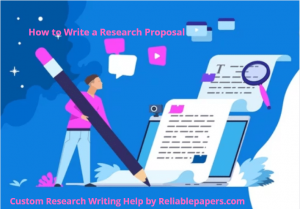


 NRS 429VN VARK Analysis Paper Assignment Brief
NRS 429VN VARK Analysis Paper Assignment Brief